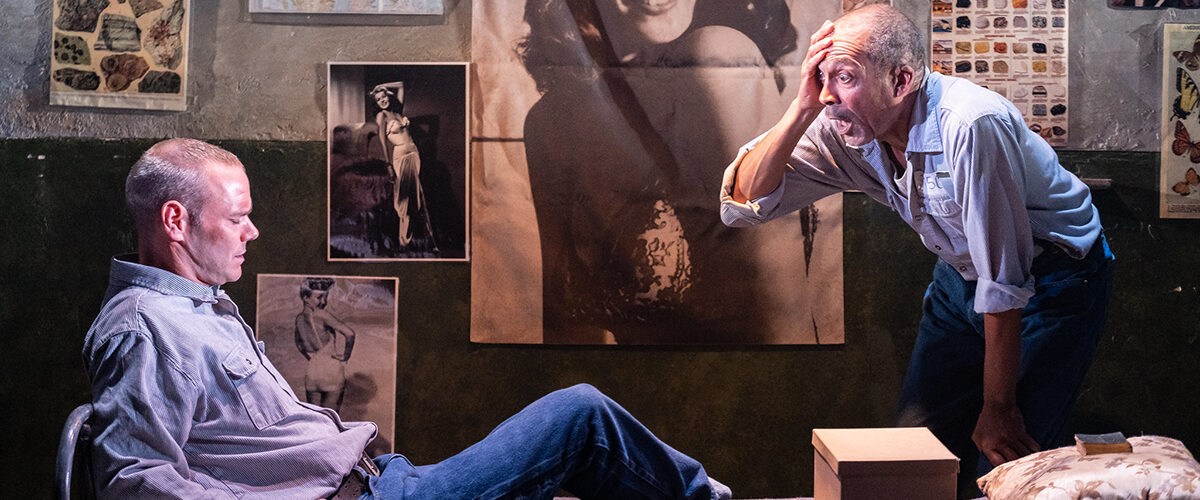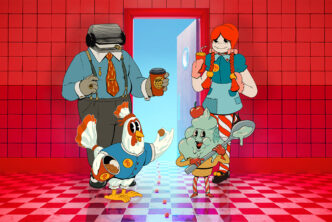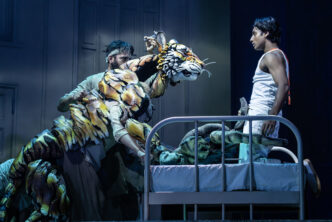The curtain rises to reveal four young men, each naked but preserving a modicum of dignity by holding a small pile of his own clothing (shoes and all) at a strategic height. These four are the latest inmates, just arrived at Shawshank Maximum Security Penitentiary, somewhere in Maine, New England, USA. The year is 1947.
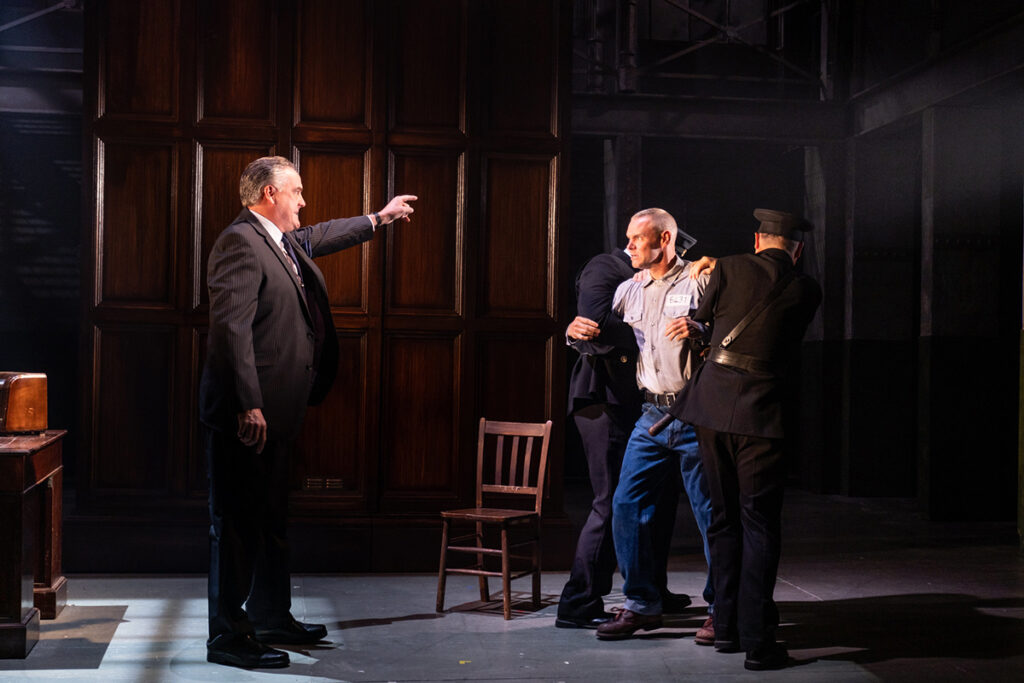
Our narrator, Ellis ‘Red’ Redding, tells us that among these new arrivals is Andy Dufresne – a banker, convicted (wrongly, he will say, but don’t they all?) of the murder of his wife and her lover.
A loner and an outsider, Dufresne quickly falls prey to the “Sisters”, so-called ‘Bull queers’ – not homosexuals but ruthless, violent bullies, who use rape as a tool of domination, while the prison authorities look the other way.
Beaten and abused physically, Andy remains unbowed in spirit. Very gradually, over years, he and Red form a friendship. Imprisoned since his youth (also for the murder of his wife) Red is the man who can get you (almost) anything, for a price. Andy, with a hobby in geology, persuades Red to get him a small rock hammer (along with a large poster of fifties film idol, Rita Hayworth, for his cell wall).
Life inside becomes significantly more bearable for Andy when head guard, Hadley, and Warden Stammas learn how his financial nous can aid their corrupt misdirecting of prison funds (Stammas invites Andy to be his personal ‘chef’ – ie to “cook” the prison’s accounts).
News of the untimely death of a well-liked former inmate, serves as a reminder that parole, hard as it is to obtain, is no passport to a brighter future on the outside. Nevertheless, Andy tells Red (much to the latter’s irritation), hope must be maintained.
When a new prisoner claims to know the identity of the real murderer of Andy’s wife, it begins to seem like Andy’s optimism was well-founded. However, Warden Stammas and his chief enforcer, Hadley, are far from eager to let the goose that lays their golden eggs fly the coop.
Murder and mayhem are in the offing, but Andy Dufresne isn’t done for, yet. Neither, it would seem, is Red Redding.
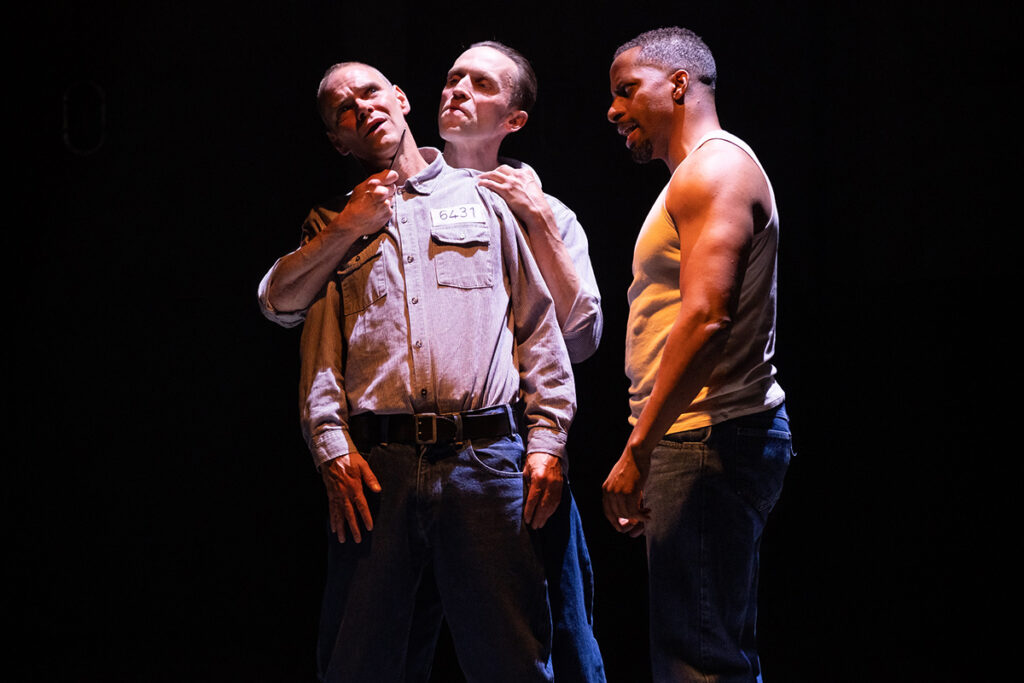
There’s no denying that the principal actors have tough acts to follow. For the most part, and greatly to his credit, Ben Onwukwe pushes Morgan Freeman’s original to the backs of our minds. As much as Andy Dufresne is the protagonist whose needs drive the plot, the heart of the story beats in Red. We have to care about him in order for the drama to work. Onwukwe’s Red is cynical and sly, but there is a core of humanity in him that responds to Andy’s obstinate decency.
Joe Absolom, capable actor though he is, falls a little short of the mark in Andy Dufresne. Absolom gives us the stubbornness and the indomitable sense of what’s right, but there is never quite the sense of deep-rooted authority, of a sharp, highly educated mind constantly at work. Warden Stammas and guard Hadley know in their hearts that Dufresne – his crimes aside – is more securely a figure of the establishment than they will ever be. Notwithstanding the oppressive surface realities of prison life, all three of them sense that he is in some way their superior. Or at least, that’s how it ought to play out.
Kenneth Jay (as the ageing trustee, Brooksie) and Coulter Dittman (as Tommy Williams, the prisoner who knows the truth about Andy’s case) both deserve honourable mentions.
The main set (designed by Gary McCann) is functional – cells on two levels surrounding a communal exercise space. However, neither set design nor lighting (by Chris Davey) show the necessary flexibility to serve the drama. In the recreation of one famous scene, the audience needs a good memory and an active imagination to feel that officer Hadley really is about to drop Andy off a roof (staged at ground level), and when Andy threatens to “bite off anything that is put in my mouth” (another memorable moment in 1994’s film) the action takes place downstage left (ie peripherally) and there is no shift of lighting to draw focus to the action. Elsewhere, a shooting becomes an (offstage) hanging, and Red’s dark night of the soul is told and not shown. Missed opportunities, one and all.
The lighting on the backdrop for the finale is very eye-catching, but this is rather too little, much too late. Technical problems with sound are also to the fore tonight.
“Hope Springs Eternal” is the subtitle of Stephen King’s novella which Dave Johns and Owen O’Neill were lucky enough to get permission to adapt for the stage. This production must be hoping that every audience is as generous as tonight’s.
The Shawshank Redemption is at The Lowry, Salford from 31 October to 5 November 2022 before continuing on tour.

